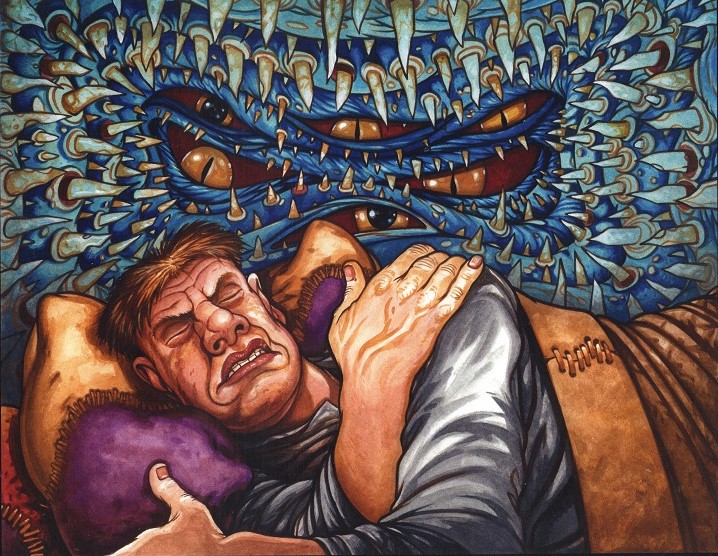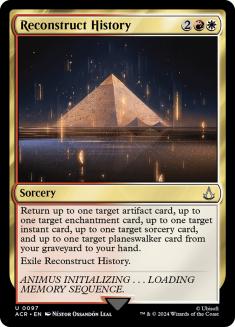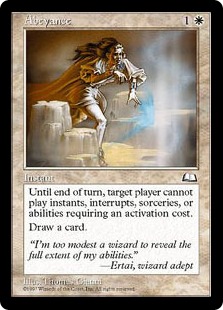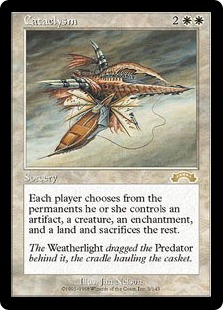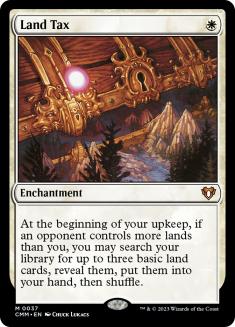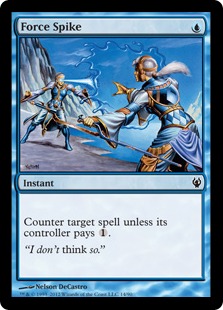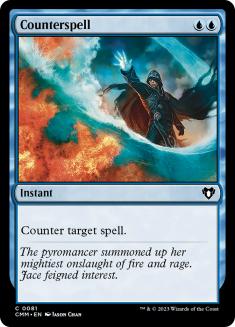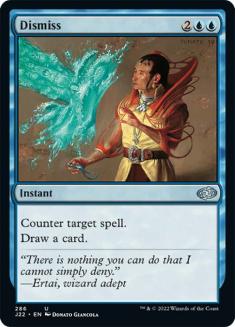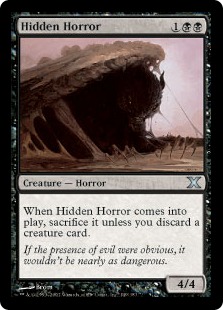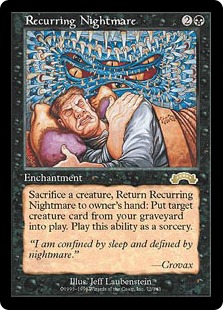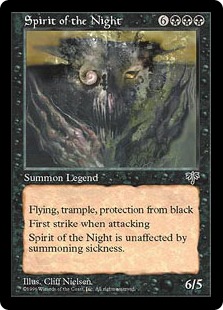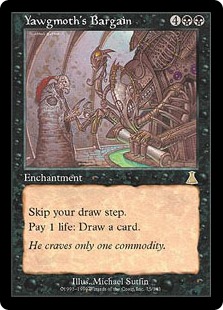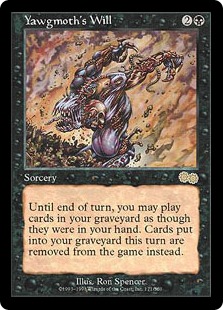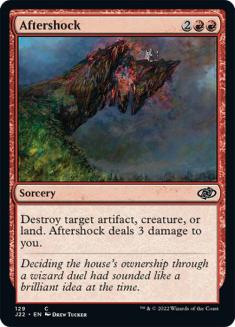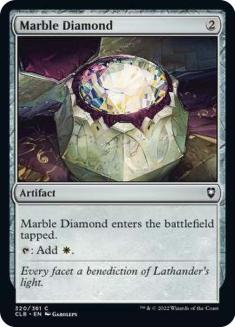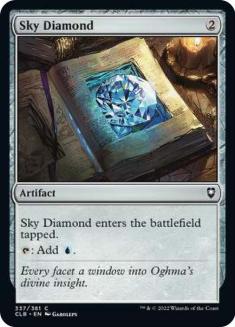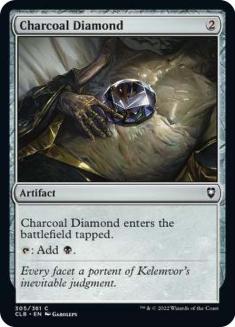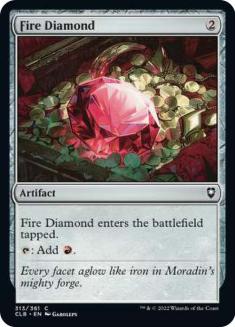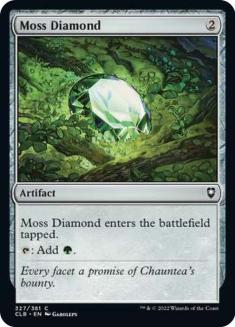A lot of the charm of Cube Draft is rooted in nostalgia. Keeping up with every Magic card that they print these days is something of a herculean task, and while I often pull from deep wells to work on highly synergistic Cubes, I think it’s clear that familiarity and aesthetic considerations meaningfully contribute to quality gaming experiences. I may be known for small Cube sizes, but the list of cards that I adore and would love to Cube with is as long as anyone’s. Today I’d like to share with you the first part of a design that highlights many of my favorite cards and decks from the history of the game.
In the sign-off for my article on The Hyper Cube, I pitched an idea for a modular Cube comprised of Twoberts for different eras in Magic, based around something like old Standard or Extended formats. I loved this idea, but there aren’t obvious cutoff points for how to design that sort of thing, and that’s the sort of roadblock that keeps me from starting a project. Then I remembered what Mark Rosewater refers to as the stages of Magic design. The work done behind the scenes to turn ideas into cardboard has gone through several significant changes with identifiable cutoff points over the years, with Rosewater identifying seven different stages to this point in time.
These stages are better understood by reading Rosewater’s writings on the topic than any rehashing that I could offer, but the ultra-condensed version is that these stages are most easily identified by broad changes in the approach to sets, blocks, and their relation to one another. My understanding is that we are currently in the seventh stage of Magic design, with these stages defined as the following ranges of sets:
- First Stage: Alpha through Alliances
- Second Stage: Mirage through Prophecy
- Third Stage: Invasion through Saviors of Kamigawa
- Fourth Stage: Ravnica through Rise of the Eldrazi
- Fifth Stage: Scars of Mirrodin through Journey into Nyx
- Sixth Stage: Khans of Tarkir through Rivals of Ixalan
- Seventh Stage: Dominaria to present
These cutoffs are clean and do a better job of capturing different eras in Magic’s history than something like “pre-New Phyrexia 2011 Extended.” After spending some time looking over the card lists for these eras, I got to work on designing a modular Cube comprised of Twoberts representing each of these stages. I call this project the Time Capsule Cube, and today I’m going to share the first module of this Cube with you.
Before I get into a Cube list, I want to lay out exactly what the Time Capsule Cube is. The Time Capsule Cube is a collection of Twoberts paying homage to the various stages of Magic design that can be played individually or with any number of them shuffled together to support more players or just larger card pools.
A significant note that you’ll start to see examples of next week is that, while each individual module is singleton, I did not maintain singleton across separate modules. The goal is for each Twobert to properly represent a different era in Magic’s history, independently of any other module. Aesthetically I have constructed the Cube with only physical cards printed in the respective era of the module that the card is included in, and while I only broke singleton for a handful of cards, this aesthetic marker generally maintains the spirit of a singleton design if not the letter.
I will also note that this Cube does not feature cards from supplemental products. The design reflects a lot of historical Standard and Extended decks and as such does not include cards from Masters sets, Modern Horizons, Commander decks, any of that stuff. Cards from Core Sets are featured as they impact the rotating Constructed formats, and I also dipped into Portal for a couple of nice ones, but overwhelmingly this project focuses on what would have been Standard-legal designs for a given era.
This week and in the coming weeks I’ll be going over each module independently by color and highlighting the cards that I included as well as notable exclusions to make these Cubes fun and repeatable Draft experiences. I was able to fit many of my favorites in, but some classics have sadly been left on the chopping block.
On that note, this week’s module is unique in that it is the only module that pulls from the card pool of two stages instead of one. I won’t beat around the bush here; I’ve played Old School Cubes, and I’ve had my fill of Duel Decks: Millstone vs. Moat. Not only do I find the games unsatisfying when the cards are isolated, but both the first and second stage of design would have a lot of difficulty integrating with any other stage to present a quality modular Cube experience. For that reason, the first module of the Time Capsule Cube consists of cards from the first and second stages of Magic design.
Even pulling from Alpha through Prophecy, this era easily had the shortest list of cards that I am happy to Cube with. It does feature some of the most exciting individual cards, but the list of cards that are non-starters for a Cube that I’d want to play come in large swaths of unplayably bad and broken cards alike.
I’ll also say here that this is not a powered Cube. This first Twobert falls somewhere between an Old School and a Pre-Modern Cube, and the die-hard fans of either of those environments will probably stick to what they know and love, but I do think that what I’ve put together stands on its own merits and manages to include a lot of nostalgic hits in a well-balanced and fun environment.
Of course, I’ll leave you to make that judgment yourself. Here is the list for the first module of the Time Capsule Cube. One of the first things that you’ll notice is that the color distribution looks significantly different from that of my earlier Twobert designs. Mana-fixing gets better or worse as you move through the history of the game, and in order to make a Twobert with rough mana playable, I find that including more mono-color cards and artifacts goes a long way. This was pretty easy for this module, considering that most gold cards from this era were horrible.
Now let’s break things down by color to see what we’re working with.
White
When I think of historic white decks, one of the first that comes to mind is Matt Linde’s U.S. Nationals-winning Mono-White Aggro deck. This archetype was referred to colloquially at the time as White Weenie if you want to try to Google the list, but that archetype name is as outdated as the VHS tape on which I watched coverage of that tournament. A lot of the creatures from Linde’s deck made my Cube list, and white really didn’t do a ton beyond present cheap aggressive creatures at this stage in Magic’s history. I don’t usually like double-pipped two-drops or protection in most Cubes, but you really can’t get away from that here.
Creatures (27)
Spells (33)
Sideboard

Presenting efficient threats is the thing that white has continued to do consistently well as we work into future stages, so it’s good to establish that base here. However, the list of compelling noncreature cards from this era is quite short. There are a few heaters, though.
Land Tax still floats around in some Vintage Cubes, but it really gets to shine in environments like this, combining with cards like Scroll Rack and Seismic Assault with plenty of time to set up. I also couldn’t talk myself out of including classics like Wrath of God and Armageddon, as they’re far too iconic. In fact, if you look through the list of cards that existed at this point in time, it is staggering just how many cards destroyed lands. One could reasonably conclude that “Magic as Richard Garfield intended it” often involved one player controlling zero mana sources and losing to any creature with power and toughness.
Expect more land destruction as we move into the other sections, and the ease at which lands can be destroyed unfortunately led me to eschew one of white’s most iconic early cards in Kjeldoran Outpost. The card hasn’t exactly aged well with the game, but it is very cool. Alas, roping somebody in to sacrifice a Plains so that they can get summarily Ice Stormed out of the game isn’t a great play environment.
The other card that I feel is notably absent from white is Lin Sivvi, Defiant Hero. Not only has Lin Sivvi aged very poorly, but the list of other Rebels is both short and weak. Not to mention that Rebels as a tribe don’t lend themselves to engaging Cube drafting or gameplay. So I left a couple of historically significant decks on the chopping block, but you can play a lot of different difficult to cast two drops, and isn’t that really what white has always been about?
Blue
The blue section in this Cube is positively delightful, with some good bones for wonky combo decks as well as an abundance of counterspells for players interested in drafting “Draw, Go.”
I excluded some classics like Ophidian and Tradewind Rider for not holding up well over time, but I did include some classic backbreakers like Forbid and Control Magic to make sure blue had plenty of punch. A lot of the blue cards featured commonly appear in Cubes, so there’s not a ton of justification required here.
I also shied away from many of the most powerful blue options in this era, with how far and away blue was the most powerful color. Fitting in stuff like Tolarian Academy and Tinker is not without its charm, but I’m trying to keep cards in the range of wildly unplayable and completely broken to a minimum, and it’s just not worth the effort to try to balance cards like this.
Strategic Planning is a weird inclusion, but I have a couple of reasons for it. There’s not a ton of support for Reanimator and the random mill gives players interested in reanimating a Sliver Queen a little more access to that sort of thing. More importantly, I own a Portal Three Kingdoms copy that had otherwise been collecting dust.
Merchant Scroll is a fun Easter egg as the only Homelands card in the Cube. You used to be required to play cards from every set in what was then called Type II to make sure that Magic’s weakest sets got some love. I made sure to uphold that legacy here.
Black
Not including Necropotence is something of a glaring omission, but from drafting a handful of Old School and old-bordered Cubes, I have seen the card be a consistent underperformer, often not making decks. I liked the idea of including a couple of cheap black creatures like Knight of Stromgald as a nod to old Necro decks, but there wasn’t much appeal to going deep on that sort of thing. I am somewhat bummed to have eschewed Hatred, but it’s another card that really just doesn’t hold up at all. While I wish I could make everything that I like work, that’s just not realistic. Perhaps I’ll decorate a Cube box with the classics that didn’t make the cut.
Let’s talk about what did make it into black. Among my favorites is the original Reanimator shell. Dark Ritual for Hidden Horror, discarding Spirit of the Night. Sadly, I couldn’t justify including Shivan Dragon as a Reanimator target, but a handful of classics fit in here very nicely. I’m also a fan of including Recurring Nightmare alongside Survival of the Fittest to seed the Rec-Sur archetype.
And while Necropotence didn’t make the cut, Yawgmoth’s Bargain did, and it’s one of the main combo cards in the Cube. It pairs particularly well with Cadaverous Bloom, which was part of the namesake in one of Magic’s first combo decks, and while Prosperity didn’t come close to making the Cube, you can assemble both Braingeyser and Stroke of Genius to fuel your combo or try to deck your opponent by first exiling most of your own cards. Drain Life is of course available to finish the job as well. I’m also a big fan of Yawgmoth’s Will, which is there to be cast for value about as often as it’s used to combo off.
I had considered Demonic Tutor for the Cube, but considering Vampiric Tutor’s printing in Mirage and reprinting in Sixth Edition, I felt that it was a much more significant card in the history of Constructed Magic. Casting Demonic Tutor without power in the spread borders on reasonable, but ultimately I see it as more of a Vintage Cube card and as something that’s less charming and evocative of years past for the purpose of the Time Capsule Cube.
Red
Red, like white, has a pretty clear path to follow with regard to presenting aggressive decks. A lot of the cards from old Burn and Sligh decks are present here, but I sadly couldn’t bring myself to put Ironclaw Orcs in a Cube.
Red has a good spread of targeted land destruction. My personal favorite is Aftershock, a card that really doesn’t seem like it should even exist. Most of the red cards featured are about dealing damage, so it’s nice to include one or two that raise an eyebrow.
Fire Imp is the other Portal gem that I wanted to feature, as it’s a solid card for red controlling and aggressive decks alike. Other Cubers will have a preference for going full Old School and including some truly horrific creature in this slot, but Fire Imp significantly increases the quality of the environment for me.
Goblin Bombardment is kind of an oddball here, as it isn’t terribly effective with many of the cards in the Cube. It’s kind of sweeper insulation, and it can be nice with stuff like Deranged Hermit and Sacred Mesa, but mostly it’s a plant for future modules with sacrifice themes. There are very few examples of me doing this sort of thing in the Time Capsule Cube, but there are a couple. I believe that this does meaningfully enrich the play experience of the Cube when combining modules.
There was some consideration to push Goblins as a theme with Goblin Lackey, Goblin Matron, and Goblin Ringleader, but I’ve never been happy with Goblins as a Cube archetype. Tribal decks are parasitic by nature, and Burn just carries into other eras of Magic much more seamlessly.
Green
The green section in this Cube makes me giddy. In the early days of Magic, mana acceleration was more or less the only thing that green was good at. The other thing that green did very well was reducing the opponent’s mana production. Consider the green column for this Cube a tribute to Raphael Levy’s Grand Prix-winning Legion Land Loss deck.
Creatures (19)
Lands (8)
Spells (33)

If this module kept to the first stage of Magic design, then I would have included Stunted Growth, but Plow Under is both much more powerful and iconic.
Verdant Force was one of the strongest early Reanimator targets, and having it and Sliver Queen along as a Natural Order package fits very cleanly here. This was also partly a plant for the inevitable Craterhoof Behemoth in a coming module, but it’s not at all out of place in this module, like you could argue the Goblin Bombardment is.
River Boa might look a little out of place, but that card used to see serious play, and it complements Kird Ape nicely as a card that incentivizes you to play Gruul. I don’t typically like cards like this that don’t fit well with the rest of the cards in their own color for my more heavy-handed Twobert designs with 23 mono-color cards for every color, but I’ve started to bend the rules on my approach now that I’ve grown more comfortable with the 180-card Cube size.
One last notable omission that I’ll mention is Gaea’s Cradle. Even with all the land destruction, Gaea’s Cradle still pretty transparently leads to players feeling like they’re playing different games. Rofellos, Llanowar Emissary already really pushes things, and while I do like having a couple of outliers, given that I’m paying homage to the history of design, I want to be careful not to go overboard here.
Gold
This section is small, and the only “gold” card that I haven’t touched on to this point is Orcish Lumberjack. Orcish Lumberjack is maybe one that should stick to Vintage Cubes, but given that you almost never see the card anymore, I’m happy to give it a home here for now.
Legends was the first Magic expansion with gold cards, and most of them are just expensive, well, legends. I think this environment only gets less playable if you feel the need to represent color pairs with gold cards, and trying to do so was never a serious consideration for me.
Artifacts
While this Cube isn’t powered, I did want to highlight the fact that a relevant chunk of Magic designs of the time were used on printing “fixed” versions of the most powerful cards. Mox Diamond is among the most powerful cards in this Cube, but its presence highlights that trying to make some form of Moxen work was given a lot of effort back then. The Diamond cycle, which honestly are pretty high picks even in powered Old School Cubes, offer something similar.
I considered including Lion’s Eye Diamond along these lines and as a combo with Yawgmoth’s Will, but decided it just wouldn’t make decks often enough and elected to feature Lotus Petal instead. Grim Monolith is the other power-level outlier on the mana acceleration front. It earns its spot from just how much play it saw in Constructed Magic. I had thought about pairing it with stuff like Covetous Dragon, but concluded that this was more charming in principle than in execution.
Cursed Scroll is one of my favorite cards in the Cube. I will play it in basically any deck you can draft in this Cube. In the time before planeswalkers, this kind of repeatable value was very hard to come by, and two damage answers most of the creatures in the spread. Most significantly, it’s an answer to all the creatures with protection.
The last artifact that I believe deserves recognition here is Icy Manipulator. If you’ve never played an Old School or even old-bordered Cube, it may surprise you, not only how often Icy Manipulator makes decks, but at how significant it is in gameplay. It’s one of the better removal spells, and it complements the mana denial packages. It’s a consistent overperformer.
The list of iconic artifacts from the early days of Magic is quite long, so there were plenty of cards on the chopping block here. For the most part I chose not to feature cards that have aged poorly, like Masticore and Ivory Tower, or cards that are wholly unfun, like Mishra’s Helix. There are plenty of nits to pick with the list that I landed on, but I’m happy where I landed with all the design parameters that I’m balancing.
Lands
The original dual lands do most of the heavy lifting here, but allied painlands and Mirage fetchlands do let you push your manabases a little. Decks from this Cube will mostly be one or two colors with a little splashing going on. I couldn’t resist including Wasteland and Rishadan Port to highlight that Strip Mine was considered a design worth salvaging in this era, and that’s something to keep in mind if you try to push the manabase of a deck too hard.
A couple of creature-lands show up here as well, but perhaps the most significant nonbasic land here is Thawing Glaciers. Thawing Glaciers allows you to keep making your land drops so long as Thawing Glaciers itself remains on the battlefield. While it doesn’t hold up tremendously well these days, it was a very significant part of the early days of Magic and is a nice inclusion for this module.
And that’s the first module of the Time Capsule Cube! This leg of the project was interesting for me, as all of these sets came up before I started playing. I’m a longtime student of the game and have read about decks from this era and played some of them, but I didn’t live it the way that some players did. I expect that many old-school players would make changes to my list, but keep in mind that my list is also a part of a larger project.
Next week I’ll be going over my module for the third stage in Magic design and you’ll start to get a better look at the big picture. This project has been incredibly fun for me to work on, and I hope that you’ve enjoyed this introduction to the Time Capsule Cube. I’m looking forward to sharing the rest of the Cube with you in the coming weeks.

